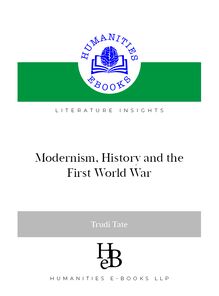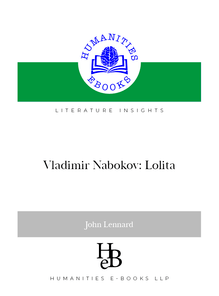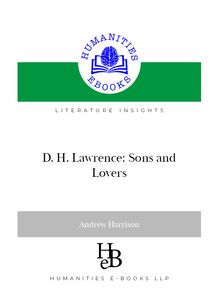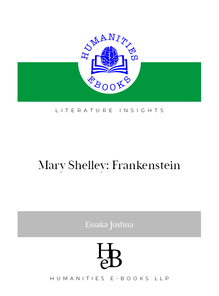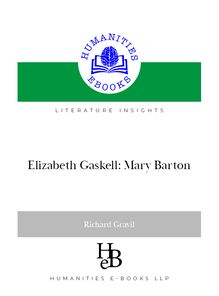-
 Univers
Univers
-
 Ebooks
Ebooks
-
 Livres audio
Livres audio
-
 Presse
Presse
-
 Podcasts
Podcasts
-
 BD
BD
-
 Documents
Documents
-
- Cours
- Révisions
- Ressources pédagogiques
- Sciences de l’éducation
- Manuels scolaires
- Langues
- Travaux de classe
- Annales de BEP
- Etudes supérieures
- Maternelle et primaire
- Fiches de lecture
- Orientation scolaire
- Méthodologie
- Corrigés de devoir
- Annales d’examens et concours
- Annales du bac
- Annales du brevet
- Rapports de stage
La lecture à portée de main
122 pages
English
Découvre YouScribe en t'inscrivant gratuitement
Je m'inscrisDécouvre YouScribe en t'inscrivant gratuitement
Je m'inscris
Obtenez un accès à la bibliothèque pour le consulter en ligne
En savoir plus
En savoir plus
122 pages
English
Obtenez un accès à la bibliothèque pour le consulter en ligne
En savoir plus
En savoir plus

Description
Jean Toomer's Cane (1923) is regarded by many as a seminal work in the history of African American writing. It is generally called a novel, but it could more accurately be described as a collection of short stories, poems and dramatic pieces whose stylistic indeterminacy is part of its unique appeal. The ambiguities and seeming oddities of Toomer's text make Cane a difficult work to understand, which is why this lucid, accessible guide is so valuable. Exploring some of the difficulties that both the writer and his work embody, Gerry Carlin offers an enthralling account of Toomer's eloquent and exquisite expression of the African American experience.
Sujets
Informations
| Publié par | Humanities eBooks |
| Date de parution | 11 janvier 2021 |
| Nombre de lectures | 0 |
| EAN13 | 9781847603326 |
| Langue | English |
| Poids de l'ouvrage | 1 Mo |
Informations légales : prix de location à la page 0,0250€. Cette information est donnée uniquement à titre indicatif conformément à la législation en vigueur.
Extrait
An American Insight from humanities-ebooks
Using this Ebookt
*This book is designed to be read in single page view, using the ‘ît page’ command. *To navigate through the contents use the hyperlinked ‘Bookmarks’ at the left of the screen. *To search, click the search symbol. *For ease of reading, use <CTRL+L> to enlarge the page to full screen, and return to normal view using < Esc >. *Hyperlinks (if any) appear in Blue Underlined Text.
Permissions
Your purchase of this ebook licenses you to read this work on-screen.
You may print a copy of the book for your own use but copy and paste functions are disabled.
No part of this publication may be otherwise reproduced or transmitted or distributed without the prior written permission of both the copyright owner and the publisher.
This work is copyright. Making or distributing copies of this book would constitute copyright infringement and would be liable to prosecution. Thank you for respecting the rights of the author.
Reading Jean Toomer’s Cane
Gerry Carlin
HEB☼Humanities-Ebooks
© Gerry Carlin, 2014
heAuthor has asserted his right to beIdentIiedas the author of this Work in accordance with the Copyright, Designs and Patents Act 1988.
First published byHumanities-Ebooks, LLP, Tirril Hall, Tirril, Penrith CA10 2JE
Cover image © Nicola Allen
hePdf Ebook is available to private purchasers from http://www.humanities-ebooks.co.uk and to libraries from Ebrary, EBSCO and MyiLibrary.com.
ISBN 978-1-84760-332-6 Pdf Ebook ISBN 978-1-84760-334-0 Paperback ISBN 978-1-84760-335-7 Kindle Ebook ISBN 978-1-84760-336-4 ePub Ebook
Contents
Acknowledgements 1 Introduction
2. Jean Toomer, the Harlem Renaissance and an Unpopular Masterpiece 2.1 The Harlem Renaissance 2.2 Modernism and Folk Songs 2.3 Toomer and Race 3 Literary Inuences and Strategies 3.1 Early Inuences 3.2 Waldo Frank 3.3 Imagism 3.4 The Waste Land 4 ReadingCane 4.1 The Country and the South 4.2 The City and the North 4.3 Kabnis: The Return to the South 5.Caneand Criticism
6. Bibliography 6.1 Works by Jean Toomer 6.2 Secondary Works The Author
6 7
10 10 15 19 26 26 33 36 38 41 41 66 88 99
112 112 113 119
6
Gerry Carlin
Acknowledgements
Special thanks to Paul McDonald for his editorial skills, and to Nicola Allen for her really helpful comments on a draft of this study, and for the cover art.
1 Introduction
st Jean Toomer’sCaneSeptember 1923, andwas published on the 1 would come to be regarded by many as one of the earliest and most original works associated with the cultural movement in African-American literature, art and music called the Harlem Renaissance. In reference works, libraries and bibliographiesCaneis called a novel, but it is more accurately described as a collection of short stories, 1 poems and dramatic pieces of ‘indeînable genre’stylistic whose indeterminacy is part of its unique appeal. Structurally,Caneis sub-divided into three sections, set respectively in the agrarian American south, the modern industrialised north, and a înal return south. It examines the life of rural folk, modern city dwellers, and their expe-rience of change, diaspora and uprootedness, dealing with taboo topics such as racial mixing, miscegenation and racist violence. Most of the key writers and intellectual îgures of the day praised the work, despite being somewhat awed by its exploration of unconventional themes and use of modernist techniques; even its detractors noted that ‘Canean interesting, occasionally beautiful and often queer is 2 book of exploration into old country and new ways of writing.’ Cane’s author was equally unconventional. In 1922 Jean Toomer described himself as being the product of ‘seven blood mixtures,’ who had ‘lived equally amid the two race groups. Now white, now coloured’ and throughout his life had ‘striven for a spiritual fusion 3 analogous to the fact of racial intermingling.’ AsCane’s editors have
1 Nellie Y. McKay,Jean Toomer, Artist: A Study of His Literary Life and Work, 1894–1936Hill and London: The University of North Carolina Press, (Chapel 1984), p. ix. 2 Robert Littell, ‘A Review ofCane’reprinted in Jean Toomer, (1923), Cane, second edition, edited by Rudolph P. Byrd and Henry Louis Gates Jr (New York & London: W. W. Norton, 2011), p. 183. 3A Jean Toomer Reader: Selected Unpublished Writings, edited by Frederik L.Rusch (New York & Oxford: Oxford University Press, 1993), pp. 15–16.
8
Gerry Carlin
written of the work and the man: Raised as an African American but, to most observers, racially indeterminate, Toomer embodied in his person, in his disposi-tion, and in his art many of the signal elements—hybridity, alien-ation, fragmentation, dislocation, migration, uidity, experimen-tation—that deîne American modernism, and that he would so 1 imaginatively address inCane. However, even asCane went into print its author’s interests were already shifting from artistic creation to the teachings of the Armenian spiritual leader and mystic George Gurdjieff, as Toomer began the îrst of a series of quests for a different kind of ‘spiritual fusion’ versions of which would occupy him for the rest of his life. These quests would take him out of the world of literature, out of his adopted ‘race group,’ and into a relatively reclusive search for forms of ‘higher consciousness’ which produced only didactic and moralising writings—the antithesis ofCanestylistically and both thematically—and which, for the most part, remained unpublished during Toomer’s lifetime. The removal of its creator from the literary scene is one of the reasons that the history ofCane’s production and reception is a chequered one. In 1923 it appeared in a very small print run. It was reprinted in 1927, but then faded from view until it was rediscovered by scholars of African-American writing and republished in 1967— 2 the year that its author died in obscurity. ButCanedidn’t disappear from the literary landscape because of unfavourable reviews. Indeed, even after the apparent disappearance of its author it acquired a ‘clas-sic’ status among the period’s writers and intellectuals. As the authors of the îrst full-length study of Toomer wrote: Canebecame one of those classics kept alive by word of mouth and sheer admiration on the part of its readership. This is a ver-iîable statement since, when it became time for those success-ful îgures of the 1920s to write their memoirs,Caneis men-tioned time after time as one book which stuck in the mind as
1 Byrd and Gates, ‘Song of the Son’, in Jean Toomer,Cane, second edition, p. lviii. 2 Byrd and Gates, ‘Song of the Son’, pp. xx–iii.
1 an inspirational work.
ReadingCane
9
Paradoxically, many of the ‘problems’ thatCaneand its author faced were due to the fact that the writer and the work so successfully embodied and expressed some of the tensions and contradictions of the period that produced them. As has been suggested, the novel was an experimental work and, like Toomer himself, it was hard to categorise—and the work and its author still continue to evade easy or comfortable assessments and readings. Indeed,Caneand charts embodies the related tensions and complexities of not one but two movements—the Harlem Renaissance and literary modernism. The ambiguities and seeming oddities of Toomer’s text constantly remind the reader that modernist scepticism, the contradictions of American racial politics, and the questioning of established ideological and artistic forms, are what makeCanesuch a troubled and fascinating work. Exploring some of the difîculties that the artist and work embody will help to open up a discussion of the conicts thatCanedramatises, a book that novelist Alice Walker alleged ‘sang naturally and effortlessly of the beauty, passion, and vulnerability’ of black experience, while also expressing the ‘divided life’ of its author and 2 his world.
1 Brian Joseph Benson and Mabel Mayle Dillard,Jean Toomer(Boston: Twayne Publishers, 1980), p. 50. 2 Alice Walker,In Search of Our Mothers’ Gardens(London: The Women’s Press, 1984), p. 60.
2. Jean Toomer, the Harlem Renaissance and an Unpopular Masterpiece
2.1 The Harlem Renaissance
In the short space of time between the end of World War I and the economic decline of the Depression in the 1930s, the New York district of Harlem had formed the geographic and symbolic centre of a cultural renaissance which saw a owering of black American expression in the arts—literary, musical, dramatic, visual—movements which can themselves be seen as signs of historical transformations in the self-awareness and political commitment of black communities which would spread out into the Western world at large. Self-conîdence, critical engagement and the bid for self-realisation characterise the voices of the Harlem Renaissance, but the messages these voices carried were far from unanimously optimistic—in part because at the core of the Renaissance was a mindfulness of American history. The decades since the emancipation of the slaves in the 1860s were characterised by failures and betrayals where black Americans were systematically denied the rights, advantages and economic opportunities that their newly acquired citizenship supposedly conferred. In the South they were constrained to live under what became known as the Jim Crow laws of racial segregation, and the threat of a lynch law which made conditions, for many, worse than before the era of Reconstruction, which followed the defeat of the south in the civil war and supposedly guaranteed civil rights for ex-slaves. Social and economic experiences differed from place to place, but in varying degrees the sense of an emancipation that left a people unfree, of opportunities that were often thwarted by circumstance, and of a promise of self-realisation negated by the persistence of entrenched and destructive stereotypes, persisted. These are the circumstances and experiences that would lead W. E. B du Bois to argue inThe
-
 Univers
Univers
-
 Ebooks
Ebooks
-
 Livres audio
Livres audio
-
 Presse
Presse
-
 Podcasts
Podcasts
-
 BD
BD
-
 Documents
Documents
-
Jeunesse
-
Littérature
-
Ressources professionnelles
-
Santé et bien-être
-
Savoirs
-
Education
-
Loisirs et hobbies
-
Art, musique et cinéma
-
Actualité et débat de société
-
Jeunesse
-
Littérature
-
Ressources professionnelles
-
Santé et bien-être
-
Savoirs
-
Education
-
Loisirs et hobbies
-
Art, musique et cinéma
-
Actualité et débat de société
-
Actualités
-
Lifestyle
-
Presse jeunesse
-
Presse professionnelle
-
Pratique
-
Presse sportive
-
Presse internationale
-
Culture & Médias
-
Action et Aventures
-
Science-fiction et Fantasy
-
Société
-
Jeunesse
-
Littérature
-
Ressources professionnelles
-
Santé et bien-être
-
Savoirs
-
Education
-
Loisirs et hobbies
-
Art, musique et cinéma
-
Actualité et débat de société
- Cours
- Révisions
- Ressources pédagogiques
- Sciences de l’éducation
- Manuels scolaires
- Langues
- Travaux de classe
- Annales de BEP
- Etudes supérieures
- Maternelle et primaire
- Fiches de lecture
- Orientation scolaire
- Méthodologie
- Corrigés de devoir
- Annales d’examens et concours
- Annales du bac
- Annales du brevet
- Rapports de stage
Signaler un problème
YouScribe
Le catalogue
Le service
© 2010-2024 YouScribe
